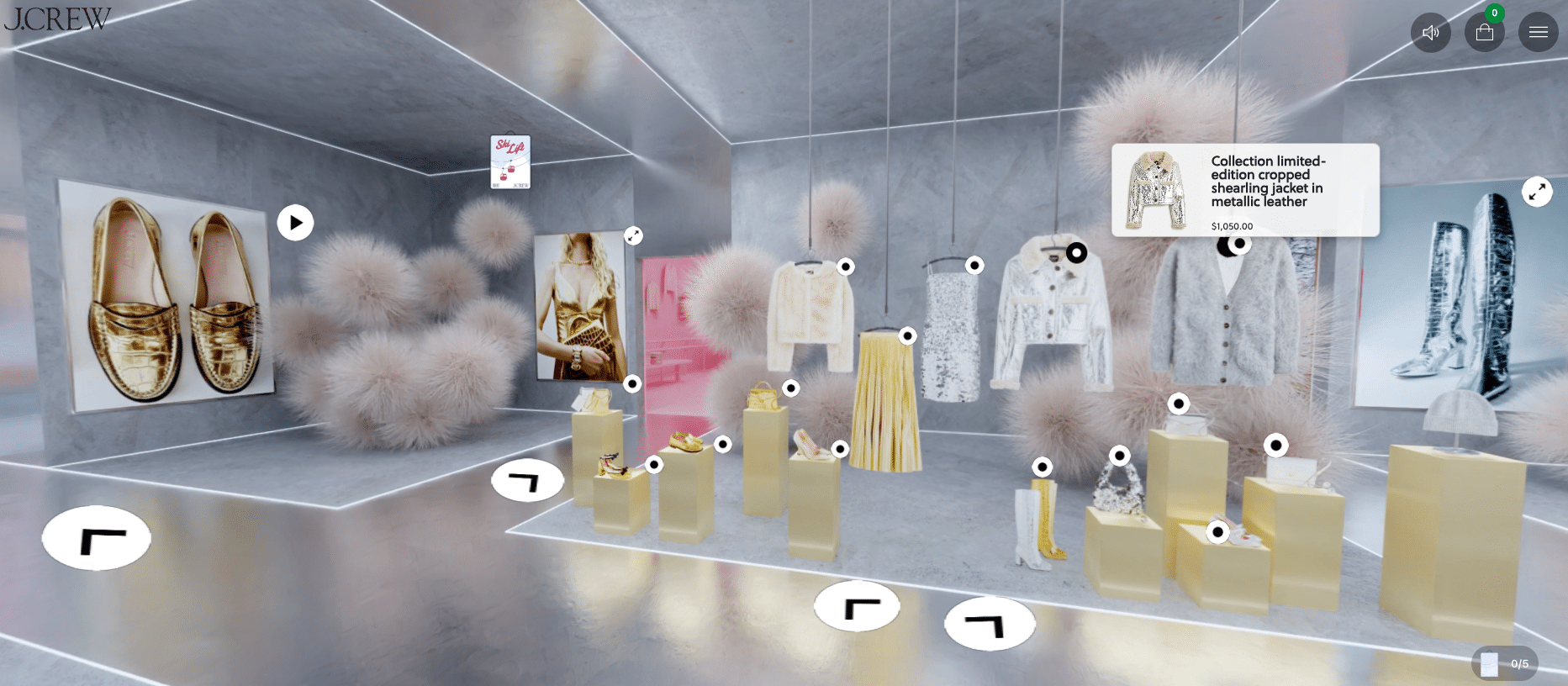Thinking of investing in virtual reality? With so many new developments in this space, ecommerce retailers of all sizes are asking the same question—but it may not be the right one. Instead, you should be asking:
Is now the right time to invest in v-commerce?
The last decade has highlighted the possibilities of virtual reality (VR) and how it can transform virtual shopping experiences. However, VR has struggled to garner widespread adoption despite these opportunities. And while companies like Lululemon have seen success experimenting with virtual experiences, others, like Walmart have stumbled when it comes to offering fully immersive VR shopping.
The release of Apple’s VisionPro could change all of that. This highly-anticipated device has the potential to connect retailers with new audiences while building loyalty and increasing average order volume. With that in mind, let’s explore the (mostly) uncharted realm of v-commerce to help you decide if it’s worth the investment!
What Does a VR shopping Experience Look Like?
Augmented Reality vs. Virtual Reality
Before diving into the statistics, it’s essential to know the difference between augmented reality (AR) and virtual reality (VR). Augmented reality enhances the real world with digital elements, while virtual reality engages users in a completely virtual environment. So, in the world of retail, what does that look like? AR, which allows shoppers to preview products in their chosen environment, is famous for goods like home furnishings. Meanwhile, VR imitates the in-store experience with a digital showroom and is used to sell everything from apparel to cars.
Let’s take a look at some examples used in virtual stores.
AR Examples
Buying glasses online can be risky for some shoppers without being able to try them on in person. An excellent representation of the power of augmented reality in ecommerce is Warby Parker’s Virtual Try-On. This feature allows customers to try on glasses virtually and recommends frame width before purchasing. Not only do their customers find this feature fun, but it also provides a convenient next-level online shopping experience.
VR Examples
Ever wish you could experience the benefits of in-store shopping without ever leaving home? J.Crew and Puma are among the forward-thinking brands that have embraced VR to create futuristic shopping experiences. From J.Crew’s virtual showroom to Puma’s experimental 3D playground, this environment allows shoppers to engage with the brand with a fresh perspective. These experiences blend the convenience of online shopping with reminiscent of a physical store, offering customers a unique and compelling journey.

J.Crew’s “World of J.Crew” virtual showroom, powered by Obsess.
Taking a Look at V-Commerce Statistics
The current v-commerce market
The growing number of virtual reality headset owners represents an untapped audience for retailers to market to. A study done in 2022 estimated a total of 31.3 million people using VR via virtual reality headsets. In 2024, consumer spending on AR/VR is expected to reach a whopping $72 billion.
VisionPro sales predictions
Now, let’s get to the hot virtual ticket item of 2024! With the release of Apple’s Vision Pro, sales predictions hint at a significant impact on the VR market. Analysts estimate Apple’s AR/VR headset will generate around $1.4 billion in sales this year. The success of Vision Pro could pave the way for increased adoption of VR in ecommerce.
Ecommerce-specific VR statistics
Understanding shifting market dynamics is vital for making informed decisions for those considering investing in v-commerce. Experts confirm that online shopping conversion after introducing VR can increase by 17% compared to the average 2% ecommerce conversion rate. The increase in conversions is likely because shoppers enjoy the overall experience of how VR shops display their products rather than a typical online shop.
Is V-Commerce a Good Investment for Your Business?
Is v-commerce the right move for your business? Let’s take a look at the pros and cons of this emerging technology:
Pros
To start, v-commerce is a real attention-grabber. The unique shopping experience that VR offers can charm customers and leave a lasting impression that boosts brand recognition. Standing out in today’s crowded market is no easy feat, but v-commerce has the potential to set your brand apart, creating a memorable shopping journey. In v-commerce, customers can also explore virtual stores, interact with products in a 3D space, and even receive tailored recommendations based on their preferences and behavior. This results in increased time customers interact with your brand and creates a stronger connection between the customer and the products or services you offer.
Cons
But—and it’s a big but—there are some cons to consider. First off, it takes a whole lot of cash just to get started with v-commerce. Implementing VR technology can be challenging, and the costs can be a genuine hurdle for smaller businesses with limited budgets. In addition, despite the growing buzz, VR has yet to overtake the mainstream entirely. Customers need more time to consider incorporating VR into their shopping routines, making it a riskier investment.
Ultimately, only some businesses will find VR to be their golden ticket. Depending on your industry and target audience, you might discover that the hype around VR doesn’t align with your own limitations or goals.
Should You Invest in V-Commerce Right Now?
So, to invest or not? The answer depends on your business goals. While fortune favors the bold—it’s unlikely to result in a fortune for your business (see what we did there?). Investing in v-commerce remains risky and out-of-reach for most retailers. But that could change as time goes on. In the meantime, we recommend paying attention to this space while exploring cost-effective alternatives that deliver similar results.
Fortunately, you don’t have to look far for ways to increase conversion rates and create seamless customer shopping experiences.
A solution like Searchspring can help retailers optimize their online stores and drive amazing ecommerce shopping experiences. Not to mention, it comes at a more accessible and affordable price point than current VR technology. Investing in a powerful tool like Searchspring can help create unique experiences for your customers and engage with them to increase conversions and improve shopper loyalty. We’ll help you get the right products in front of the right shoppers with relevant, personalized, on-site search results.
Ready to see how Searchspring works on your ecommerce site? Contact us today and see how Searchspring’s site search, merchandising, and personalization solutions help you build more meaningful connections with your customers—no headset required!

